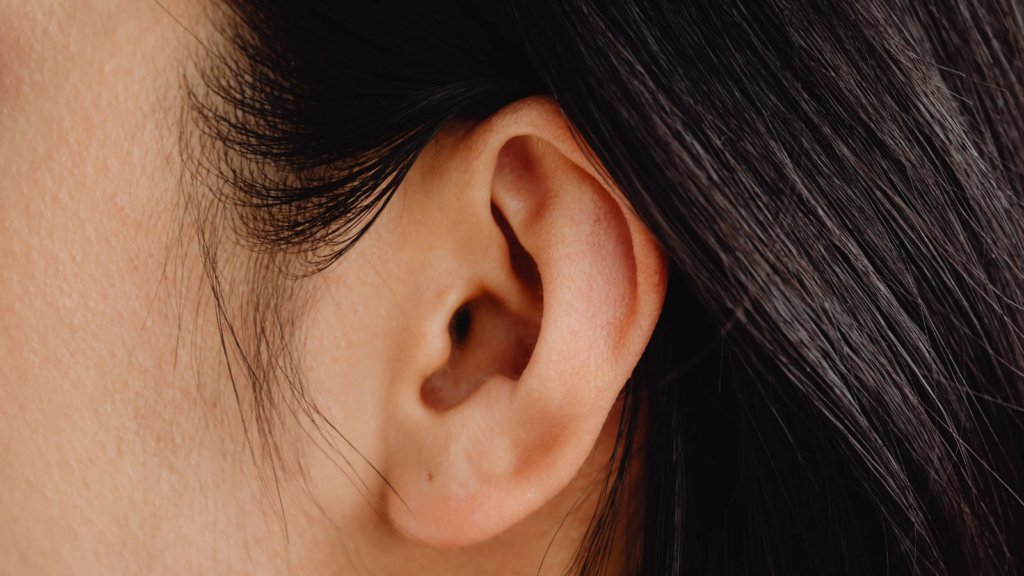Exploring the Complexity of the Inner Ear and Its Disorders

The inner ear, a complex and delicate structure nestled deep within the skull, plays a crucial role in our ability to hear and maintain balance. Unfortunately, like any other part of the human body, the inner ear is susceptible to various disorders that can significantly impact a person’s quality of life. In this blog post, we will explore the intricacies of the inner ear and shed light on some common inner ear disorders.
The Anatomy of the Inner Ear
To comprehend inner ear disorders, it’s essential to first grasp the intricate anatomy of this remarkable sensory organ. Located deep within the temporal bone of the skull, the inner ear comprises two main components: the cochlea and the vestibular system.
- Cochlea:
- The Cochlea is the spiral-shaped, snail-like structure of the inner ear responsible for hearing. It contains thousands of tiny hair cells, nerve endings, and fluid-filled canals.
- Sound waves enter the cochlea through the vibrations of the eardrum and the three small bones of the middle ear (ossicles). These vibrations are then translated into electrical signals by the hair cells.
- Vestibular System:
- The Vestibular System is responsible for maintaining balance and spatial orientation. It consists of three semicircular canals and the otolithic organs—utricle and saccule.
- Semicircular Canals: Three fluid-filled loops oriented in different planes, they detect rotational movements of the head.
- Utricle and Saccule: These are responsible for detecting linear acceleration and gravity. They contain small crystals called otoliths that move in response to changes in head position.
- Vestibulocochlear Nerve:
- The Vestibulocochlear Nerve, also known as the eighth cranial nerve, connects the inner ear to the brain. It carries electrical signals from the cochlea responsible for hearing and the vestibular system responsible for balance.
- Eustachian Tube:
- Although not part of the inner ear, the Eustachian tube connects the middle ear to the back of the throat, helping to equalize pressure between the middle ear and the external environment.
The inner ear functions as a highly coordinated system, with each component playing a specific role in the process of hearing and maintaining balance. The conversion of mechanical vibrations into electrical signals, the transmission of these signals to the brain via the vestibulocochlear nerve, and the integration of auditory and vestibular information all contribute to our ability to perceive sound and navigate the world around us.
Common Inner Ear Disorders
Several inner ear disorders can impact hearing and balance, often leading to a range of symptoms that can significantly affect an individual’s daily life. Here are some common inner ear disorders:
- Meniere’s Disease:
- Meniere’s disease is a chronic disorder characterized by episodes of vertigo (spinning sensation), fluctuating hearing loss, tinnitus (ringing in the ears), and a feeling of fullness or pressure in the ear. It is believed to be associated with an abnormal buildup of fluid in the inner ear.
- Vestibular Schwannoma (Acoustic Neuroma):
- This noncancerous tumor develops on the vestibular nerve, which connects the inner ear to the brain. As it grows, it can lead to hearing loss, imbalance, and, in rare cases, pressure on the brain.
- Labyrinthitis:
- Labyrinthitis is an inflammation of the inner ear, often caused by viral or bacterial infections. This inflammation can disrupt the normal functioning of the inner ear, leading to symptoms such as vertigo, hearing loss, and nausea.
- Benign Paroxysmal Positional Vertigo (BPPV):
- BPPV is characterized by brief episodes of vertigo triggered by specific head movements. It occurs when small calcium crystals in the inner ear become dislodged and enter the semicircular canals, disrupting normal fluid movement.
- Otosclerosis:
- Otosclerosis is an abnormal bone growth in the middle ear that can affect the stapes bone’s movement. This can lead to hearing loss and, in some cases, dizziness.
- Superior Semicircular Canal Dehiscence (SSCD):
- In this condition, there is a hole or opening in the bone of the inner ear, specifically the superior semicircular canal. This can lead to symptoms such as vertigo triggered by loud sounds, hearing loss, and sensitivity to certain frequencies.
- Autoimmune Inner Ear Disease (AIED):
- AIED is a rare condition where the body’s immune system attacks the inner ear, leading to sudden or rapidly progressive hearing loss and, in some cases, balance issues.
- Tinnitus:
- While not a disorder on its own, tinnitus is a common symptom of various inner ear issues. It involves perceiving sound, often described as ringing or buzzing, without an external source.
Diagnosis and Treatment
Diagnosis of Inner Ear Disorders:
- Medical History and Physical Examination:
- The process often begins with a detailed medical history to understand the patient’s symptoms, their onset, and any potential contributing factors. A thorough physical examination, including examination of the ear and neurological assessment, is conducted.
- Hearing Tests:
- Audiometric tests, such as pure-tone audiometry and speech audiometry, help assess the extent and nature of hearing loss. These tests can also help distinguish between conductive and sensorineural hearing loss.
- Balance Assessments:
- Vestibular function is evaluated through tests like electronystagmography (ENG) or videonystagmography (VNG) to measure eye movements during head and body position changes, helping diagnose disorders like BPPV or vestibular schwannoma.
- Imaging Studies:
- Imaging techniques like magnetic resonance imaging (MRI) or computed tomography (CT) scans may be used to visualize the structures of the inner ear and identify any abnormalities, such as tumors or malformations.
- Blood Tests:
- In cases where autoimmune inner ear disease is suspected, blood tests may be conducted to detect autoimmune markers.
Treatment Approaches for Inner Ear Disorders:
- Medications:
- Depending on the specific disorder, medications may be prescribed to alleviate symptoms. For example, diuretics and vestibular suppressants can be used in the management of Meniere’s disease, while corticosteroids may be employed in autoimmune inner ear disease.
- Lifestyle Modifications:
- Dietary changes, reduced salt intake, and management of stress can be crucial in managing conditions like Meniere’s disease. Lifestyle adjustments can also help minimize triggers for certain disorders.
- Physical Therapy:
- Vestibular rehabilitation therapy (VRT) is a specialized form of physical therapy designed to improve balance and reduce dizziness in individuals with inner ear disorders. Specific exercises are tailored to address the patient’s unique symptoms.
- Surgical Interventions:
- In cases of vestibular schwannoma or other tumors, surgical removal may be considered. Surgical procedures may also be performed to correct structural abnormalities or restore hearing.
- Canalith Repositioning Procedures:
- For conditions like BPPV, canalith repositioning maneuvers, such as the Epley maneuver, can be performed to reposition displaced calcium crystals in the inner ear, alleviating symptoms of vertigo.
- Cochlear Implants:
- For individuals with severe hearing loss or deafness, cochlear implants may be recommended to bypass damaged parts of the inner ear and stimulate the auditory nerve directly.
- Management of Tinnitus:
- While there is no cure for tinnitus, various strategies, including sound therapy, counseling, and the use of hearing aids, may help manage and alleviate the perception of constant ringing or buzzing in the ears.
It’s important to note that the choice of treatment depends on the specific diagnosis, severity of symptoms, and individual patient factors. Early detection and intervention are crucial for optimizing treatment outcomes and minimizing the impact of inner ear disorders on an individual’s quality of life. Regular follow-ups with healthcare professionals are essential to monitor progress and adjust treatment plans as needed.
Disclaimer
The information provided in this blog post is for informational purposes only and should not be considered as medical advice. It is not intended to replace professional medical diagnosis, treatment, or guidance. Always consult with a qualified healthcare provider for accurate diagnosis and appropriate treatment for any health condition. The author and the website assume no responsibility or liability for any consequence resulting directly or indirectly from the use of information in this blog post.
Stay updated—subscribe now for informed empowerment!

